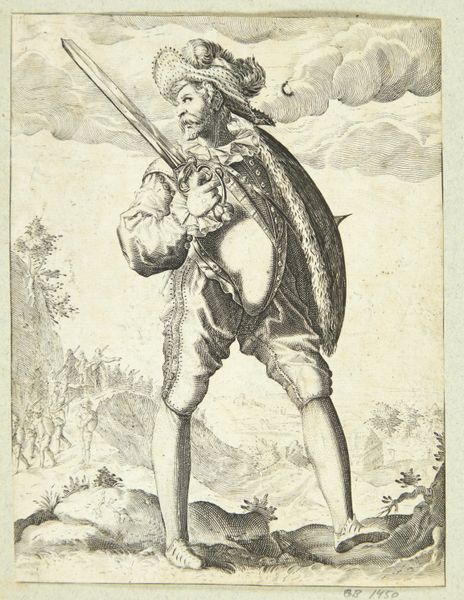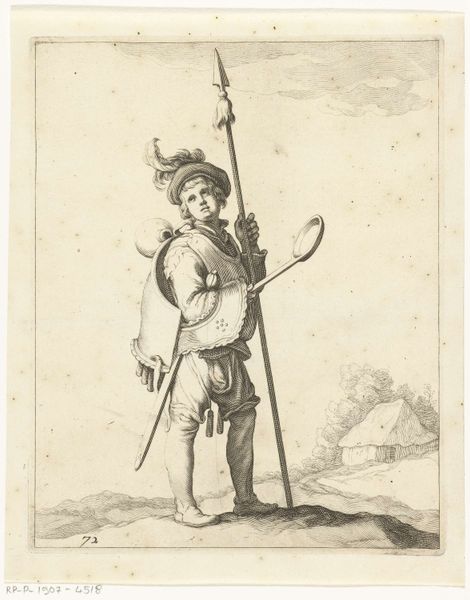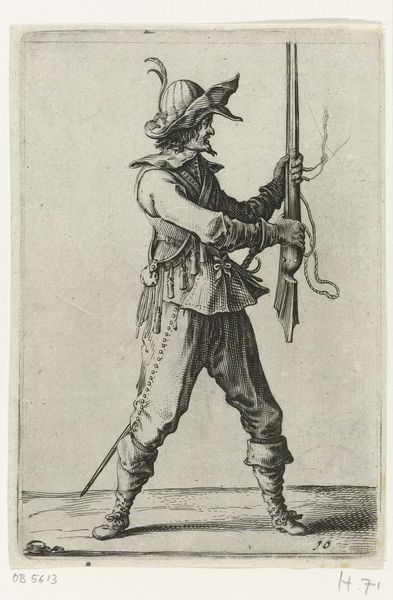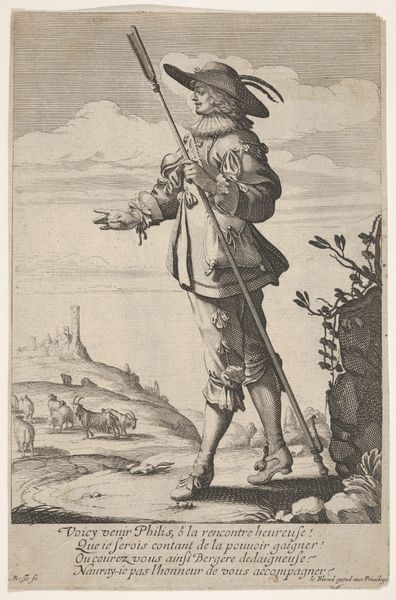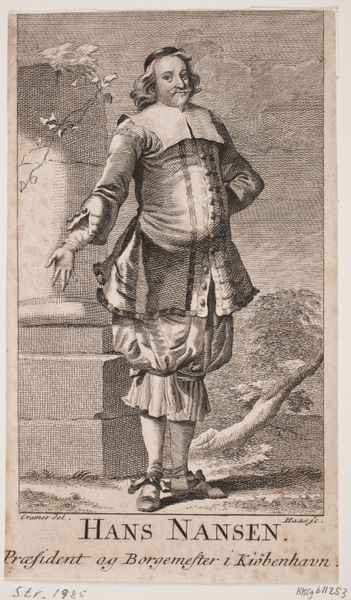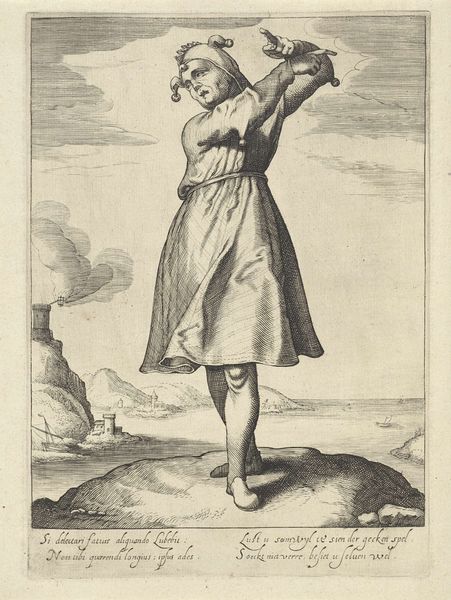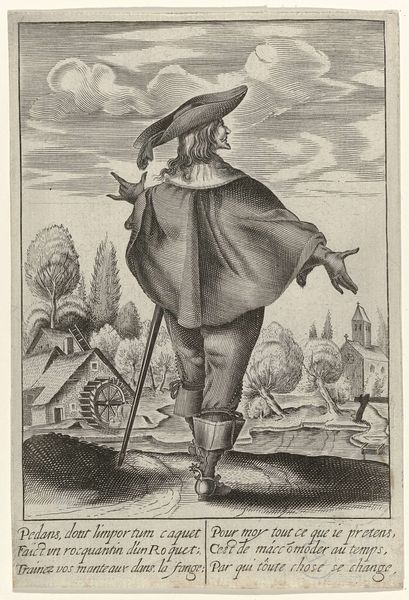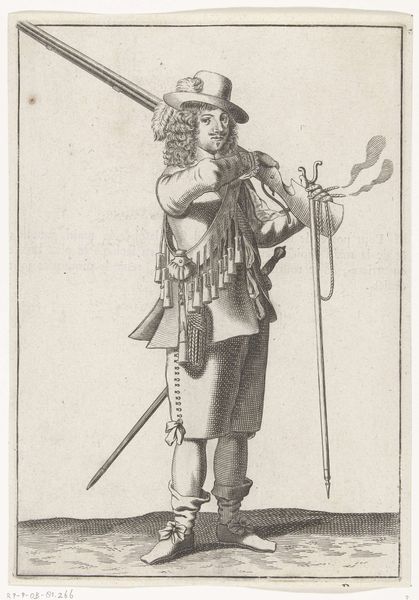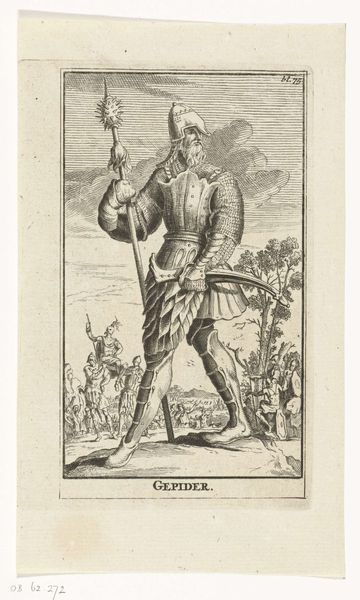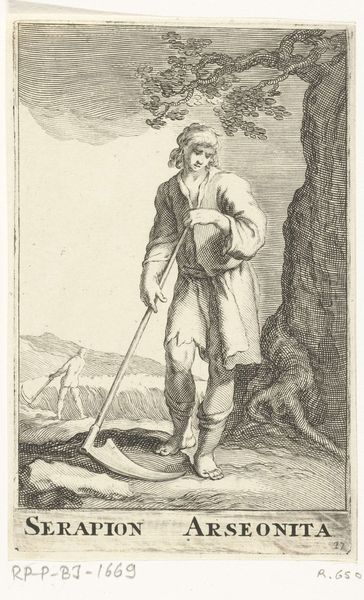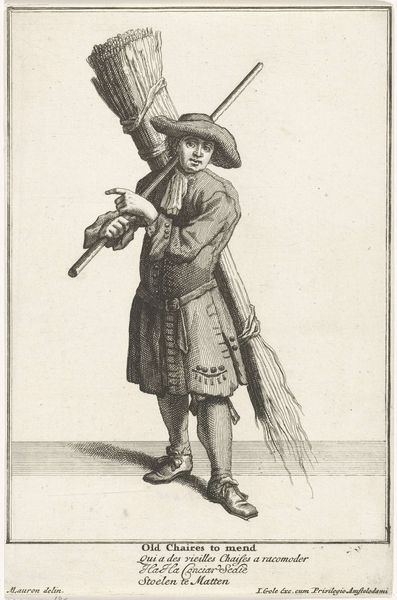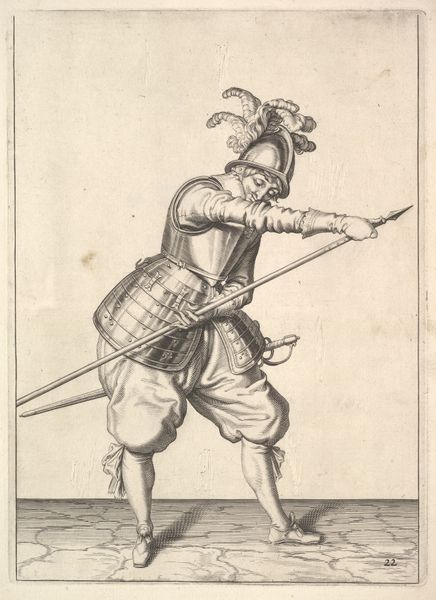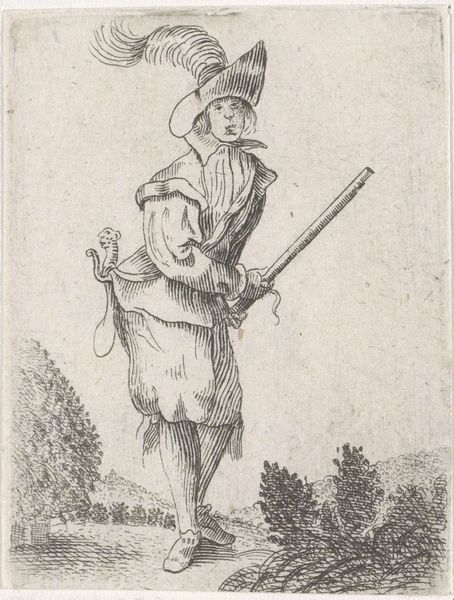
drawing, print, etching, engraving
#
drawing
#
baroque
# print
#
etching
#
landscape
#
figuration
#
genre-painting
#
engraving
Dimensions: height 165 mm, width 110 mm
Copyright: Rijks Museum: Open Domain
This is "Zomer" or "Summer," an etching by Frederick Bloemaert, made in the Netherlands probably sometime in the mid-17th century. Bloemaert was part of a large family of painters and printmakers, active in Utrecht, a city that remained Catholic in a largely Protestant country. This print is part of a series on the four seasons. Here, Summer is personified as a youth with a scythe, standing amid a ripe field of grain. But what’s interesting is how Bloemaert represents this figure: is it a straightforward celebration of nature’s bounty? Or something more complex? In the 17th century, Dutch art began to reflect the values of a rising merchant class. Landscape, genre scenes, and still lifes became popular, often carrying moral or political messages. By depicting Summer as a young, almost vulnerable figure, Bloemaert might be commenting on the fleeting nature of prosperity, or perhaps reflecting on the social realities of agricultural labor. To fully understand Bloemaert's intent, we can delve into period literature, farming practices, and religious beliefs. In doing so, we start to appreciate the historical and cultural forces that shaped this image.
Comments
No comments
Be the first to comment and join the conversation on the ultimate creative platform.
